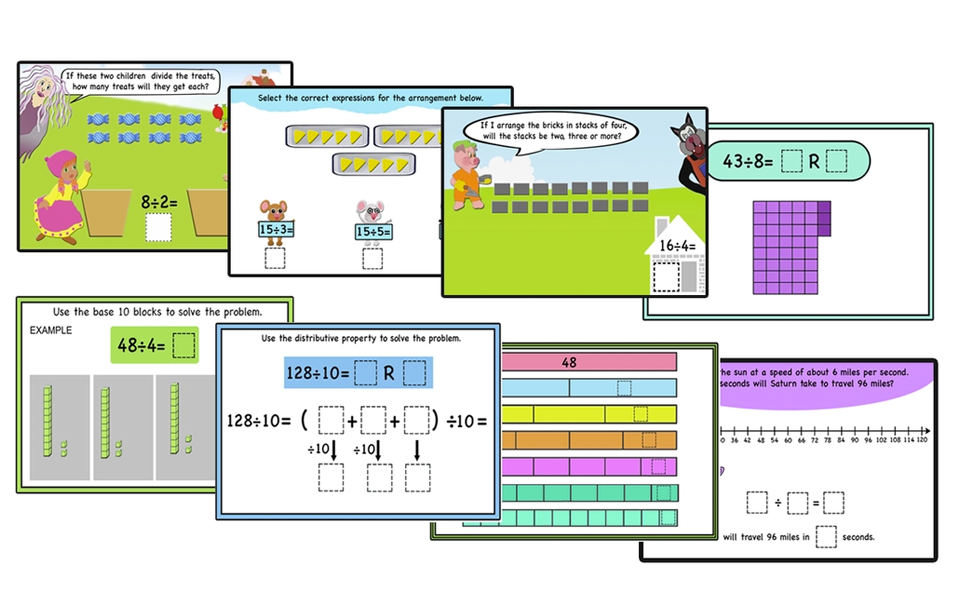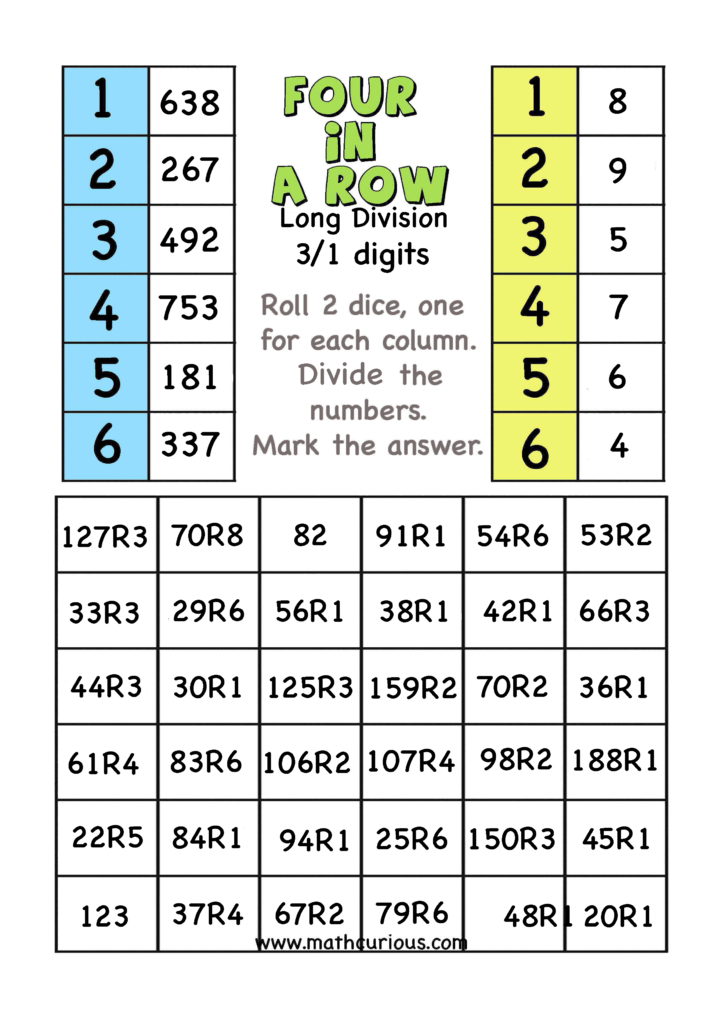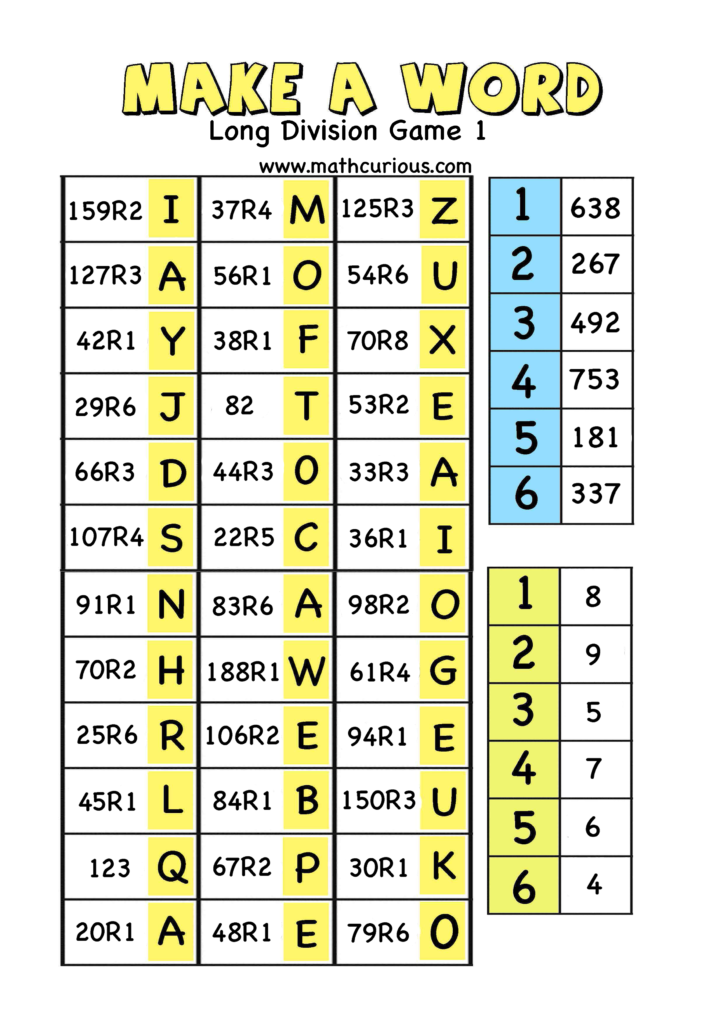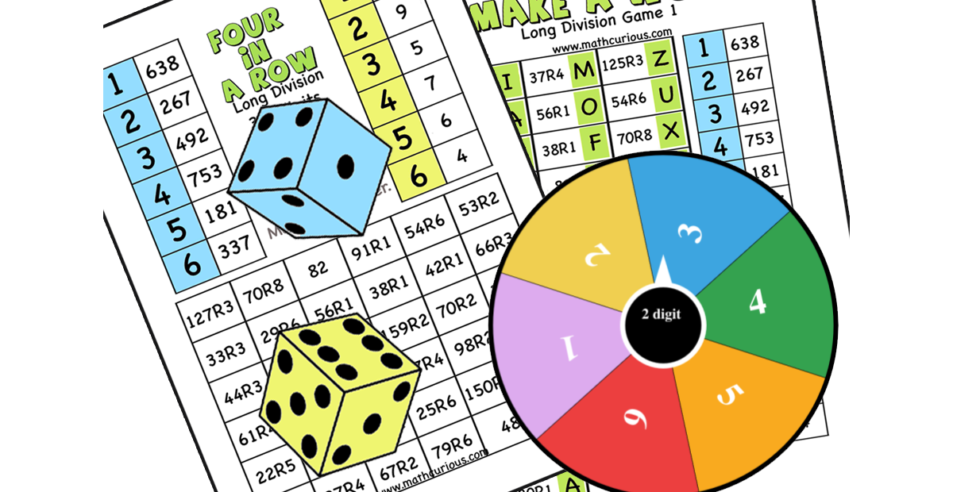Since the multi-digit addition and subtraction and Multi-Digit Multiplication games were a great success in my classroom and from what I heard in yours as well, I have decided to create a few for long division as well. The idea of these games is to motivate the students to practice the algorithm. Practicing calculations is often boring for the students but so necessary. I hope that these games/activities will add some excitement to the work.
To play these games the students need to know and understand division and the partial quotient or the traditional long division algorithm. The games came in print and google slides form.
I am a big fan of the partial quotients algorithm however, I teach the traditional one as well once the students are ready. I believe that the partial quotients algorithm does wonders for the mental math skills of the students and it is more clear and conceptual. The traditional algorithm is essentially the same thing but seems more abstract for most students, and causes confusion.
If you are starting with the concept of division and the algorithms check out these activities Diving into Division -Teaching division conceptually

Game 1 – Four in a row

How to play
2-6 players or groups/pairs
The students use two 6 face dice or roll one dice twice. The first dice/roll will give them a number from the first column and the second dice roll will give them a number from the second column. They can use two different color dice, one for the first column and one for the other. They divide the numbers they got. (They do this on their own draft paper or use the template given). The students need to have “proof” that they did the calculations. Also, with the students having their calculations organized on a paper you can easily review a few combinations for the whole class or check their work individually.) I allow the students to use any way they want to solve the problem, partial quotients, traditional algorithm. If the students don’t find the answer on the grid they know that they need to check their work.
Once they get an answer from their dice combination they find it on the board/grid and mark it by coloring it. If it’s taken by another player they just wait for their next turn. The first player/team to get a 4 in a row vertically, horizontally, or diagonally wins. The players can both roll for their numbers and then do the calculations at the same time instead of waiting for each other.
You can turn this game into a race of who will mark the most tiles in a given time, however, this version is better with pairs or teams.
You can use the board as a worksheet and a single-player game/activity. The students are given a number of problems to solve and then check if they got 4 in a row. They can also race to who will get 4 in a row first.
Make a word

How to play
This game is very similar to the one above with the exception that instead of making four in a row you need to form a word. Every number that you mark on the grid gives you a letter. You collect the letters and when you have enough to make a word you win. The first player to make an actual word wins. You can decide that the word has to be 3 and more letters for a longer play. If more than one players make a word the biggest word wins.
This is a fun game to play with teams and pairs as well. The team gets to roll a number of times let’s say 12 and do the calculations. Then they try to make the longest word with their letters.
You can use the board as a worksheet and a single-player game/activity. The students are given a number of problems to solve and then check if they got a word with their letters. They can also race to who will get a word first.
I hope that you find these games useful.
Below you will find the free and premium versions of this resource.
The free version includes two print games for long division 3/1 digits and the templates for the calculations. The templates help the students to keep track of the problems they solved and the teacher to check the work. Download the free version below.
The premium version includes 6 games for 3/1, 3/2, and 4/2 digits division, the calculation templates, and the google slides version for all the games. The students can do the calculations on paper or on slides. The google slides version uses a spinner instead of dice.
This is a growing resource as more games (different numbers and more digits) will be added soon.
Find the bundle with all 3 resources addition, subtraction, multiplication, and division games at a better price here

